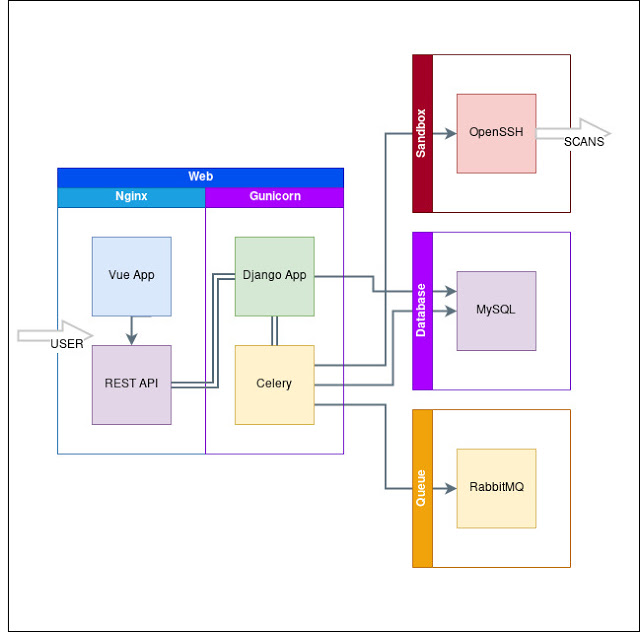Pulsar – Network Footprint Scanner Platform – Discover Domains And Run Your Custom Checks Periodically

Pulsar is an automated network footprint scanner for Red Teams, Pentesters and Bounty Hunters. Its focused on discovery of organization public facing assets with minimal knowledge about its infrastructure. Along with network data visualization, it attempts to give a basic vulnerability score to find infrastructure weak points and their relation to other resources. It can be also used as a custom vulnerability scanner for wide and uncharted scopes. This software was created with availability and openness in mind, so it is 100% free, and does not require any API keys to use its features.
This is a beta release, be prepared to notice bugs or even crashes. Help me out and submitt an issue.
What it is not?
- Vulnerability Management Platform
- Full OSINT framework scanner
- Speed oriented tool with immediate results
- Stable enterprise product you can rely on (beta release)
Key features
- Subdomains discovery
- Cloud resources discovery
- Basic vulnerability scanning
- Scan policies & optimization
- Data visualization
- Collaboration & data export
- Scheduling & notifications
- REST API
- External APIs integration
- OAUTH integration
- Custom scanner extensions
Integrated projects
- OWASP Amass
- Nmap
- RIPEstat API
- CloudEnum
- SSH Audit
- WhatWeb
- NVD Data Feed
Future ideas
- Stability and speed improvements.
- CLI client
- More open source integrations.
- More detailed scan settings.
- IPv4 subnet discovery.
- Additional confidence tests.
- Additional frontend user controls.
- Harvesting false positive metadata for machine learning model.
Installation instructions
If you would like to use External APIs see USAGE.md
In order to use email notifications, edit
EMAIL_BACKEND SETTINGSinportal/portal/settings.pybefore the installation
Windows
Prerequisites
- Git-tools
- Installer is available here.
- Docker engine and docker-compose
- Docker installation instructions are available here.
- docker-compose installation instructions are available here.
Prerequisites will be verified during installation process.
Installation
- Clone or download latest pulsar repository
git clone https://github.com/pulsar/- Run powershell installer
PS> .install.ps1- Proceed with installer instructions
- Login to pulsar console at
https://localhost:8443/with generated default credentials
Linux
Prerequisites
- Git-tools Install git from package manager of your distribution, i.e.
sudo apt install git- Docker engine and docker-compose
- Docker installation instructions are available here.
- Docker-compose installation instructions are available here.
Prerequisites will be verified during installation process.
Installation
- Clone or download latest pulsar repository
git clone https://github.com/pulsar/- Run bash installer
# ./install.sh- Proceed with installer instructions
- Login to pulsar console at
https://localhost:8443/with generated default credentials
Architecture
Pulsar is a PaaS based on docker-compose file with pre-installed requirements. Provided architecture can be easliy scaled, converted and deployed to multiple common cloud environments. Web application server is based on services such as Nginx, Gunicorn and Django Rest Framework.
Docker container structure

For more information see
docker-compose.yml
Contribution
In case of issues
- Feel free to issue a bug report.
- See troubleshooting section here.
In case of ideas
- Feel free to issue a change request.
- Feel free to issue a pull request.
- Send me a private message.
In case you would like to see it hosted
- I’m considering launching a funding campaign.
In case you like the idea
- Star me and tell your friends!
In case of general criticism about code quality and architecture
- You don’t need to use it.
- Feel free to issue a pull request.
Documentation
User guide
Basic usage guide can be found here.
REST API
Self describing API is available at /pulsar/api/v1/ endpoint.
Development
Currently the only available documentation is available at /admin/doc/ endpoint.
Full development documentation will be available in future release.

![[QILIN] - Ransomware Victim: The Blood and Marrow Transplant Group of Georgia 3 image](https://www.redpacketsecurity.com/wp-content/uploads/2024/09/image-300x300.png)
